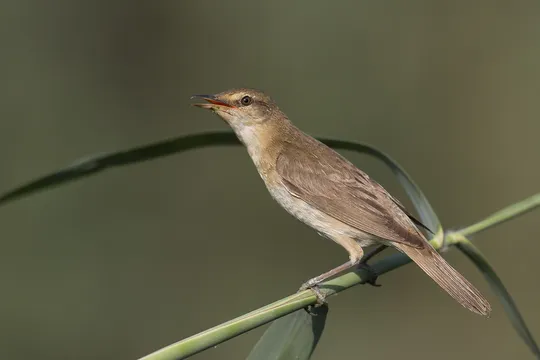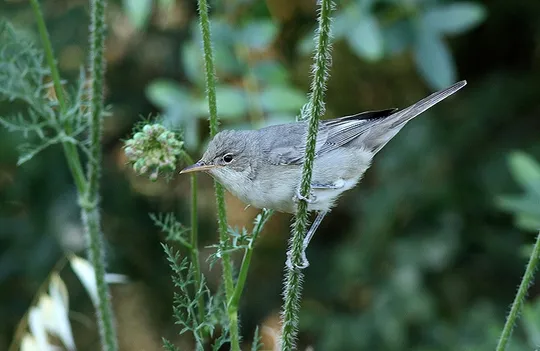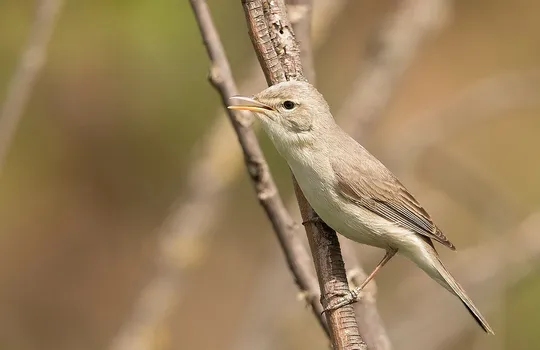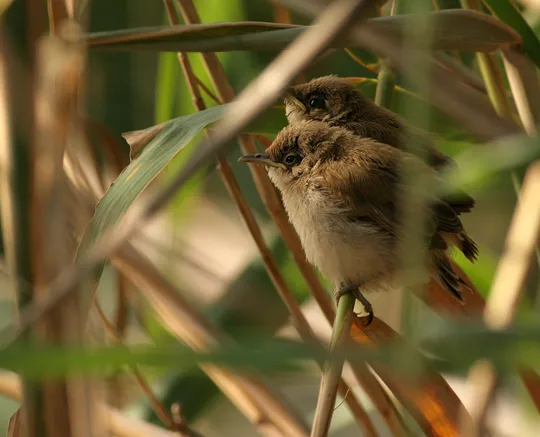Acrocephalus melanopogon
 Critically Endangered
Critically Endangered
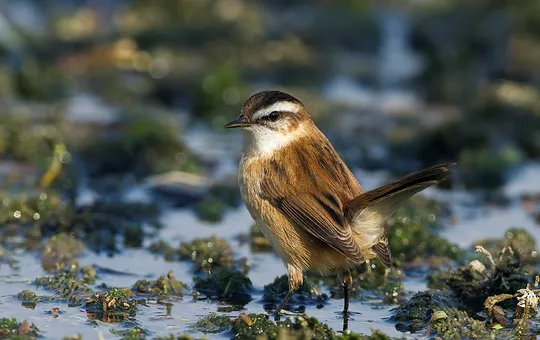
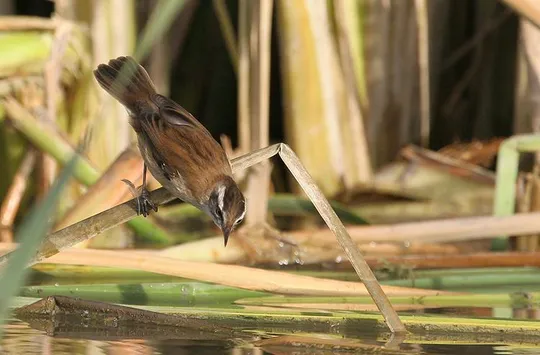
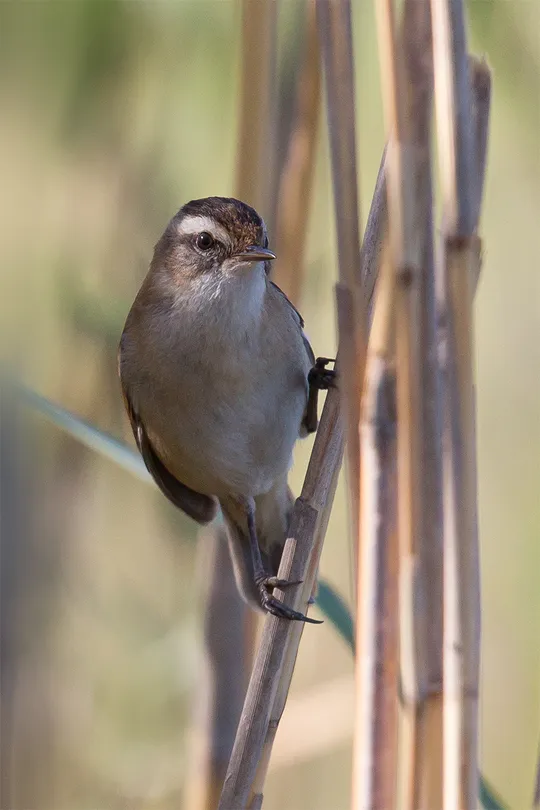
| Habitats | Wetland Thickets |
|---|---|
| Presence In Israel | Resident, Summer |
| Breeding In Israel | Breeder |
| Migration Types | Short Range / Partial |
| Zoographical Zones | Mediterranean |
| Landscape Types | Wetlands, Wetland Thickets |
| Vegetation Types | Marsh and Riparian |
| Vegetation Densities | High |
| Nest Locations | Wetland Thickets |
| Diet Types | Invertebrate |
| Foraging Grounds | Trees and Shrubs |
| Body Sizes | Small (up to 500g) |
| Threat Factors | Wetland Drainage & Pollution |
The Moustached Warbler is an extremely rare breeder in northern and central Israel. There is no information regarding whether it is a resident or a summer breeder. It is a relatively common winter visitor and passage migrant. Until the 1960s, the Moustached Warbler was a relatively common nesting species in the Hula, Bet She’an and Jezreel valleys as well as on the northern coastal plain. As a result of habitat modification and destruction, the breeding population has decreased dramatically and is now on the verge of extinction. In the 1980s, only 10-20 pairs bred in the Hula, northern Sea of Galilee and the Bet She’an Valley (Shirihai 1996). A lone nest was found in the Dan Region Wastewater Treatment Plant (Shafdan) near Rishon LeTsiyon in 1989, and a number of pairs nested in the same area (today an amusement park lake) in 2013. According to data from Moustached Warbler ringing in the Hula Valley, it is possible the species nests there sporadically.
Water bodies in Israel’s Mediterranean and steppe regions, in varied riparian thickets and reed stands. During migration and in winter it can also be seen in agricultural fields and in dense vegetation far from water.
The current breeding population of the Moustached Warbler is fragmented and relictual. A sharp decline in its population size occurred in the 1950s and 1960s following the drainage and destruction of wetlands. There is no information regarding the number of winter visitors and passage migrants in Israel.
The major threat facing the Moustached Warbler is habitat modification and destruction – drainage, modification of water bodies, particularly marshes and streams. Fishponds and reservoirs usually fail to serve as adequate alternatives for the natural habitats because of the uniformity and scantiness of their riparian vegetation.
No specific conservation measures have been taken for this species to date.
The Moustached Warbler breeding population in Israel is relictual and very fragmented due to the dramatic reduction of suitable habitats. The population that formerly bred in northern Israel was at the southern limit of the species range in the Western Palearctic. Small populations may breed in Syria and Lebanon (Cramp & Simons 1992, BirdLife 2017), but the chances of individuals from these populations immigrating to Israel (rescue effect) are negligible.
In order to rehabilitate the Moustached Warbler population in Israel it is necessary to expand the availability of potential habitats through management actions, aiming at extending riparian vegetation in areas such as the Hula, Bet-Tsayda and Acre valleys.
- פז, ע. 1986. עופות. מתוך אלון, ע. (עורך), החי והצומח של ארץ ישראל. כרך 6. הוצאת משרד הביטחון, ישראל.
- Cramp, S and Simmons, R.G. 1992. The Birds of the Western Palearctic, Volume 6. Oxford University Press
- Shirihai, H., 1996. The Birds of Israel. Academic Press, London.
- Symes, A. 2013. Species generation lengths. Unpublished, BirdLife International.
- Species page at Birdlife International
Current Occupancy Map
| Data Missing | Sporadic | Limited Sites | Low Density | High Density |
|---|---|---|---|---|
| 0 | 0 | 0 | 0 | 0 |
Distribution maps
The maps presented here provide visual information on the distribution of species in Israel from the past and present, and the changes in occupancy and breeding density during the comparison period. For further reading
Relative Abundance 2010-2020
Breeding density values in the current decade as determined from experts' opinion and observations from databases.
| Data Missing | Sporadic | Limited Sites | Low Density | High Density |
|---|---|---|---|---|
| 8 | 12 | 12 | 21 | 19 |
Relative Abundance 1980-1990
Density values based primarily on the book The Birds of Israel (Shirihai 1996).
| Data Missing | Sporadic | Limited Sites | Low Density | High Density |
|---|---|---|---|---|
| 5 | 14 | 14 | 17 | 22 |
Occupancy 1990-2020
The map shows differences in the species breeding distribution between the 1980's breeding map and the current weighted breeding evaluation. Negative value - species previously bred in the grid and is not presently breeding; positive value - species has not previously bred in the grid and is currently breeding.
| Data Missing | No Change | Occupancy Increase | Occupancy Decrease |
|---|---|---|---|
| 6 | 35 | 1 | 9 |
Change in Relative Abundance 1990-2020
The map shows the changes in the relative abundance of a species in each of the distribution grids between the breeding map of the 1980s and the weighted current breeding evaluation. Negative values - decline in abundance; positive values - increase in abundance; zero - no change in abundance.
| 80 to 100 | 50 | 20 to 30 | No Change | 30- to 20- | 50- | 100- to 80- | Data Missing |
|---|---|---|---|---|---|---|---|
| 0 | 4 | 2 | 22 | 12 | 14 | 11 | 16 |
| Rarity | |
|---|---|
| Vulnerability | |
| Attractiveness | |
| Endemism | |
| Red number | |
| Peripherality | |
| IUCN category | |
| Threat Definition according to the red book |
 Contributed:
Contributed: 